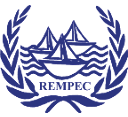About Midsis Trocs
Introduction
Maritime transport is often described as “the backbone of globalized trade and the manufacturing supply chain”, since more than 80% of the global merchandise trade by volume is carried by sea. Some of the goods transported are defined as Hazardous and Noxious Substances (HNS). HNS might be released into the sea as the consequence of illegal discharges or maritime accidents such as groundings or collisions; and whilst major incidents involving an HNS spill are rare, they can be very complex and potentially have severe impacts on human health, the environment, and socio-economic resources. The particular challenges associated with responding to HNS incidents are linked to the heterogeneity of the various substances considered as HNS, which include substances presenting various hazards (physical hazards such as fire and explosion, health hazards such as toxicity, and environmental hazards) and behaviours (gases/evaporators, floaters, dissolvers, sinkers).
The Maritime Integrated Decision Support Information System Transport of Chemical Substances MIDSIS TROCS is a free and publicly available tool that aims to facilitate decision making in case of chemical spill. It provides a tool to first responders primarily for their safety and to take well informed decision, using MIDSIS-TROCS decisions trees features with concise information and action sheets, as well as updated information on chemical characteristics and reactivity, GESAMP Profiles, shoreline and at sea response guides, and more.
The new Maritime Integrated Decision Support Information System on Transport of Chemical Substances (MIDSIS-TROCS4.0) is the result of cooperation efforts of many experts and international and national institutions. MIDSIS-TROCS version 4.0 has been prepared by the Regional Marine Pollution Emergency response Centre for the Mediterranean Sea (REMPEC) with the financial support from the European Union in the framework of the Project Western Mediterranean Region Marine Oil and HNS Pollution Cooperation (West MOPoCo) West MOPoCo project and the Mediterranean Technical Working Group (MTWG) composed of experts of Mediterranean Coastal States. Under the leadership of REMPEC, the development was carried out with the technical assistance of the International Maritime Organization (IMO), the Baltic Marine Environment Protection Commission (HELCOM), the Bonn Agreement, the Centre of Documentation, Research and Experimentation on Accidental Water Pollution (CEDRE), the Royal Belgian Institute of Natural Sciences, Transport Canada (CANUTEC) and the International Tanker Owners Pollution Federation Ltd. (ITOPF).
A tool in constant evolution
MIDSIS-TROCS has evolved and has been regularly updated and upgraded since its first edition in 2001, namely TROCS 2001 database, which was developed by REMPEC in collaboration with Malta University Services (MUS). TROCS was renamed Mediterranean Integrated Decision Support Information System on Transport of Chemical Substances in 2003. Since MIDSIS TROCS has been used by response organizations and institutions world wide and by governments in and outside the Mediterranean region and recognising the non-regional specificity of the data contained in the tool; in 2011, MIDSIS TROCS 2.0 was reviewed as a web-based application for universal access and was renamed Maritime Integrated Decision Support Information System on Transport of Chemical Substances (MIDSIS-TROCS).
The new version 4.0 of MIDSIS-TROCS includes the following updates:
- The integration of databases and information from other projects, in particular from the HNS-MS project.
- The update of the chemical database and relevant emergency guides.
- The update of the accident database.
- The integration of the “Marine HNS Response Manual, Multi-regional Bonn Agreement, HELCOM, REMPEC” in the upgraded decision support trees feature.
- The development of a stand-alone application of MIDSIS-TROCS 4.0 both on workstations (laptop, computer) and mobile phones, tablet (App) to satisfy the needs of operational personnel, who would require information onsite without access to internet.
Content
When a hazardous material marine spill has occurred or is likely to occur, certain decisions need to be taken related to plausible response measures. This tool, designed as a reference for use in the field (downloadable offline application) or office (Online version), aims at assisting responders to take well informed decision when responding to marine chemical emergencies.
The tool contains response options presented in decision-tree format which are complemented with tables, matrices and diagrams, some of which derive from actual experiences on marine incident sites. The decision-trees are based on the behaviour classification system for chemicals spilled at sea which is a scheme accepted by the International Maritime Organization and other regional arrangements for combating accidental marine pollution. Other sections includes information on the behaviour of commonly transported chemicals, the compatibility of chemicals, the resistance of equipment material to chemicals and safety precautions when entering spill sites.
The main added value of this tool in comparison with other existing HNS tools is the availability of accidents reports linked to a specific chemical. Some incident reports are integrated in MIDSIS-TROCS'database whilst other incident information available on reliable websites are linked to MIDSIS TROCS which is used as a network information platform on HNS incidents reports. Likewise and with a view to provide complementary information on the chemical, the tool provides easy access to other existing chemical database such as CAMEO and WISER (Wireless Information System for Emergency Responders) respectively developed by the National Oceanographic and Atmospheric Administration (NOAA) and the United States National Library of Medicine (NLM) and other relevant documentation as the Chemical response guides of CEDRE.
The tool is a compilation of information originating from different sources which the Centre has assembled to reflect the current state-of-the-art for responding to marine chemical emergencies, with the hope that the final product is a workable tool to the end-user. Information sources used include work originating from: International Maritime Organization (IMO), Helsinki Commission - Baltic Marine Environment Protection Commission , Bonn Agreement, Centre de Documentation de Recherche et d'Experimentations sur les Pollutions Accidentelles des Eaux (CEDRE), Transport Canada (CANUTEC), Environment Canada, Emergency Services College, Finland, Hellenic Marine Environment Protection Association (HELMEPA), Nordic Council of Ministers and the Finnish Ministry of Interior, North Sea Directorate, Oil Companies International Marine Forum (OCIMF), Society of International Gas Tanker and Terminal Operators Ltd. (SIGTTO), Swedish Coast Guard and United States Coast Guard, and the Royal Belgian Institute of Natural Sciences.

